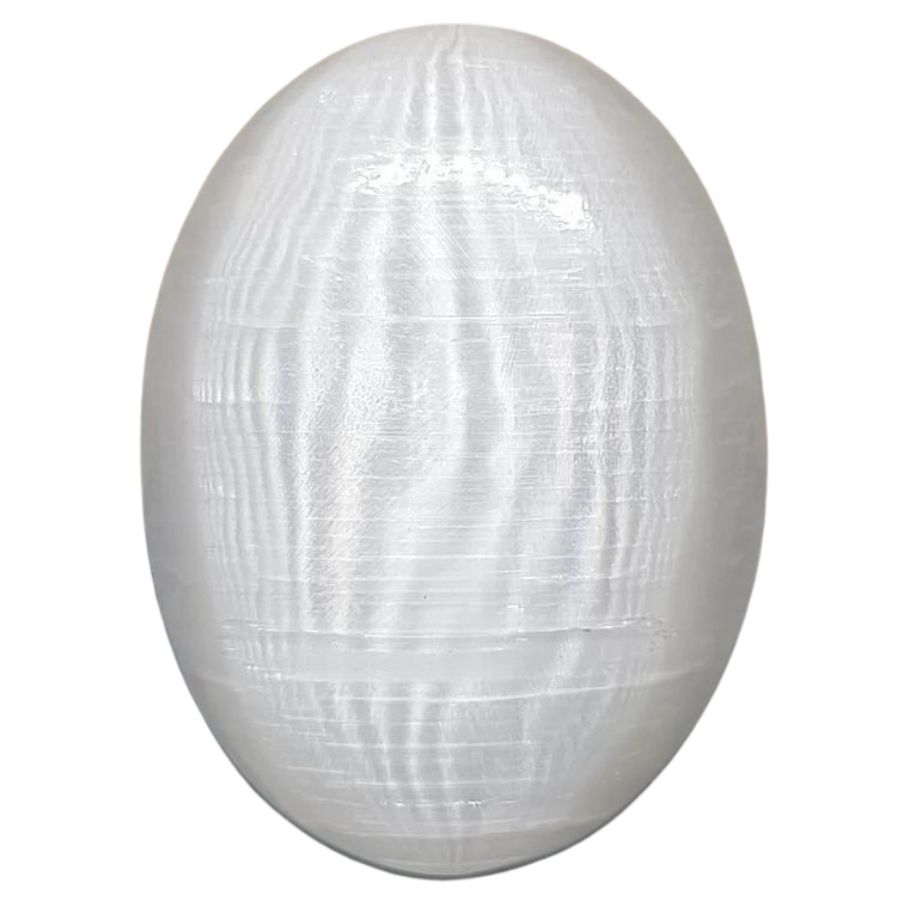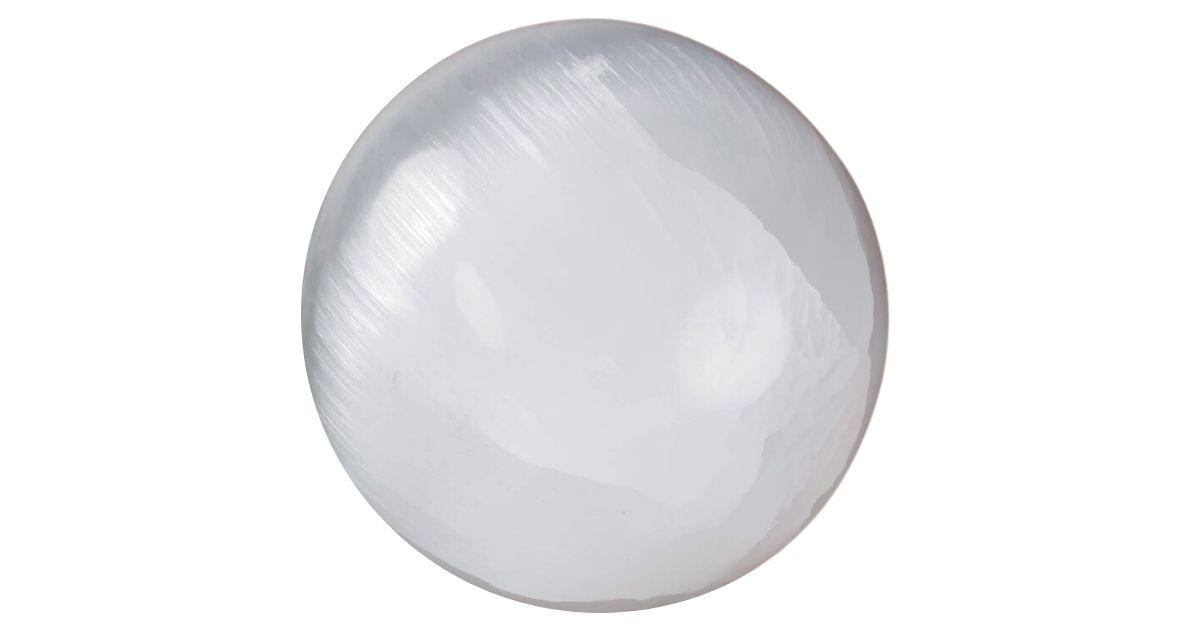When we compare ulexite vs selenite, we’re looking at two unique minerals with interesting features. Ulexite is known for its ability to act like fiber optics, which means it can carry light along its fibers.
On the other hand, selenite catches people’s eyes with its clear and transparent crystals that shine in the light. Both of these stones are cool in their own way because of how they play with light.
While ulexite can show images from one side to the other like a natural television screen, selenite’s clearness makes it look like a piece of ice. This makes both of them fascinating to explore and understand how they work with light.
Ulexite vs Selenite – The Major Differences
Ulexite and selenite might look similar at first, but they have some pretty cool differences. Here’s a closer look into what sets them apart.
Appearance – Ulexite can project images from underneath it to its surface.

Ulexite is really unique because it’s often called “TV Rock.” This cool name comes from its ability to show images from below onto its surface, just like a television screen.
Selenite, on the other hand, doesn’t have this fiber-optic trick. But it stands out with its clear, see-through look that can catch the light in beautiful ways.
Colors – Selenite can come in a wider range of colors.

Ulexite usually looks clear or white, but sometimes you might see it with a bit of gray or a pale yellow tint. This happens when there are small bits of other stuff mixed in.
Selenite is mostly known for being colorless or white too, but it can surprise you with gentle hints of orange, brown, or green. These colors show up because of different bits and pieces that get into the selenite.
Crystal Structure – Ulexite crystals grow like needles.

Crystal structure is about how the tiny bits that make up a mineral are arranged. Ulexite falls into a group called the triclinic system, where its crystals grow long and thin, kind of like needles, which helps it do its fiber-optic tricks.
Selenite is part of the monoclinic crystal system, where its crystals tend to grow in long columns. This can sometimes let them get really big and super clear, like a piece of glass.
Luster – Selenite has a glassy shine.

Luster is the way a mineral reflects light, making it look shiny or dull. Ulexite often has a shiny, glass-like look, but when it’s in fibrous bundles, it can look silky or even a bit like satin.
Selenite also has a shiny, glassy luster that catches the eye. But when you look at the places where it breaks, it can have a pearly shine that’s really pretty.
Even though both minerals can be shiny like glass, the way they shine can be different. Ulexite might remind you of silk fabric, while selenite can look like the inside of a seashell where it’s broken.
Density – Ulexite feels lighter.

Density is how much something weighs for its size, kind of like comparing a balloon to a basketball. Ulexite is on the lighter side, with a density around 1.95 g/cm3, making it feel pretty light when you pick it up.
To differentiate selenite vs ulexite, you can think about how selenite is a bit heavier. Even though selenite is still not super heavy, its density of 2.9 g/cm3 means it will feel heavier than ulexite if you hold them both.
Clarity – Selenite can be transparent like glass.

Ulexite has a special kind of see-through look because of its fiber-like structure. This structure lets light move through it in a cool way, making things below it look clear on the surface.
Selenite takes clarity to another level with some pieces being so transparent, they look like window panes.
While ulexite shows off its neat fiber-optic trick, selenite impresses with its pure transparency. Both have their own unique ways of letting light through.
Chemical Composition – Ulexite contains boron and oxygen.

Chemical composition is like a recipe that tells us what a mineral is made of. Ulexite is made from a mix that includes sodium, calcium, boron, and water, which gives it some unique features.
Selenite is different because it’s made from calcium, sulfur, oxygen, and water, making it a type of gypsum. This mix is what gives selenite its own special qualities.
Formation – Selenite forms as saltwater evaporates.

Ulexite often looks like cotton balls because of its tufty crystal formations. It shows up in places where lakes and pools dry up in deserts, leaving behind boron-rich water that turns into ulexite.
Selenite has a different story; it comes from saltwater that evaporates and leaves behind layers of salt. This cycle happens over and over for millions of years, and that’s how selenite forms.
Knowing about these formations can help you find these minerals in the wild. If you’re into rockhounding, understanding these processes can guide you to the best rockhounding locations.
Location – Ulexite can be found in dry, arid areas.

Ulexite likes to hang out in dry places where boron is found, like in California and Chile. These spots have the right conditions for ulexite to form in the ground.
Selenite, on the other hand, is a bit of a world traveler and can be found in lots of different places. Some of its favorite spots are in Mexico, the USA, and Morocco, where the conditions are just right for it to grow.
If you’re into crystal hunting, knowing where these minerals like to be can really help. Guides can show you where to look in the United States, whether you’re searching for ulexite in arid regions or selenite in its various homes.
Selenite vs Ulexite – The Similarities
Ulexite and selenite might seem different, but they actually share some cool similarities. Let’s dive into what makes these two minerals alike.
Streak – The two minerals leave a white streak.

Streak is the color of a mineral when it’s crushed into powder, and it’s a big clue to figuring out what the mineral is. Ulexite has a white streak that matches its usual white color, making it easier to know it’s ulexite when you see it.
Selenite also leaves behind a white streak, just like ulexite. But people don’t check selenite’s streak as much because it’s soft and has a special way of breaking.
Hardness – Both ulexite and selenite are soft minerals.

The Mohs scale of hardness helps us understand how easy it is to scratch minerals, with 1 being super soft and 10 being really hard. Ulexite is pretty soft, scoring between 2 and 2.5 on this scale, so even a fingernail can scratch it.
Selenite is in the same boat when it comes to softness, also having a hardness of 2. This means selenite, like ulexite, can get scratched by a fingernail too.
Cleavage – Each one has perfect cleavage in one direction.

Cleavage is how a mineral breaks along certain lines based on its crystal structure, kind of like how wood splits easier along the grain. Ulexite has perfect cleavage in one direction, which means it can split really smoothly along that line.
Selenite has the same kind of deal with its cleavage, having a perfect split in one direction just like ulexite. You can typically split selenite into thin, flat pieces.
Magnetism – Neither selenite nor ulexite is magnetic.

Magnetic means something is attracted to a magnet, like how fridge magnets stick to the door.
Ulexite and selenite just don’t react to magnets. This is because they don’t have any iron or other magnetic materials in them, which is what you need to be magnetic.
Fluorescence – Ulexite and selenite can fluoresce under the right conditions.

Fluorescence is when something glows under a special light, like how some shirts glow under black lights at a bowling alley. Ulexite can sometimes do this cool glow trick too, showing off colors like yellow or white when you shine UV light on it.
Selenite can also join in on the glow party under the right conditions, lighting up when you put it under UV light. This doesn’t happen all the time, but when it does, it’s pretty neat to see.
Conductivity – Both selenite and ulexite can’t conduct electricity.

Conductivity is about how well something can let electricity flow through it, kind of like how metal is really good at letting electricity pass.
Ulexite, however, doesn’t really do this because the stuff it’s made from doesn’t let electricity move through easily.
Selenite is also not great at conducting electricity because of what it’s made of, just like ulexite. They’re both considered non-conductors, which means electricity doesn’t really go through them well.
Price – The two crystals tend to be inexpensive.

The price of gemstones can change based on how rare they are, how pretty they look, and if they’re in high demand.
Ulexite is pretty easy to find and buy without spending too much, but if it’s polished or made to look really nice, it might cost a bit more.
Selenite is also not too pricey and you can find it in lots of places. But if you find a piece that’s really clear or big and looks great, it might be priced higher.
If you’re curious about the price of selenite and why some pieces might cost more, there are guides that can help. These guides explain what makes some selenite more valuable and can help you understand what to look for.
The Easiest Ways to Tell Ulexite and Selenite Apart
Ulexite and selenite can look pretty similar, but there are easy ways to tell them apart. We’re going to explore how to do just that.
Optical Properties

Ulexite has a super cool trick where it can act like a TV screen, showing pictures from below on its surface. This happens because of its special fiber-optic properties, something you won’t see in selenite.
Selenite, while it doesn’t show pictures like ulexite, has its own kind of beauty with its clear and shiny look. It’s pretty in a different way, letting light pass through it but not bending it to show images.
Difference in Weight

If you pick up a piece of ulexite and one of selenite that are about the same size, you might notice the selenite feels a bit heavier. That’s because selenite is denser, which means it packs more weight in the same amount of space.
Ulexite, on the other hand, is a bit lighter when you compare it to selenite of the same size. This lighter feel is a quick clue that you’re holding ulexite and not selenite.
Crystal Habit

Ulexite often looks like a bunch of tiny needles stuck together or fluffy like cotton. This special look helps it bend light, almost like magic, but really it’s just science.
Selenite, though, grows in long, clear shapes that can look like swords or big, flat pieces. These crystals are really smooth and shiny, making them stand out because of how light dances off them.


